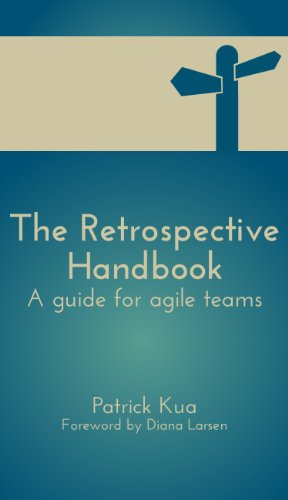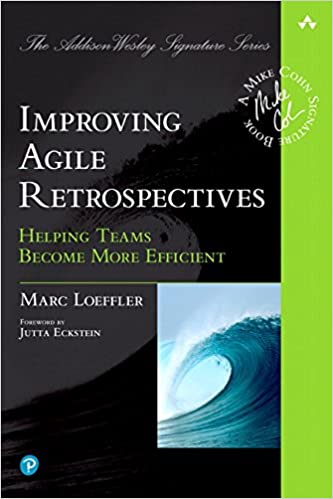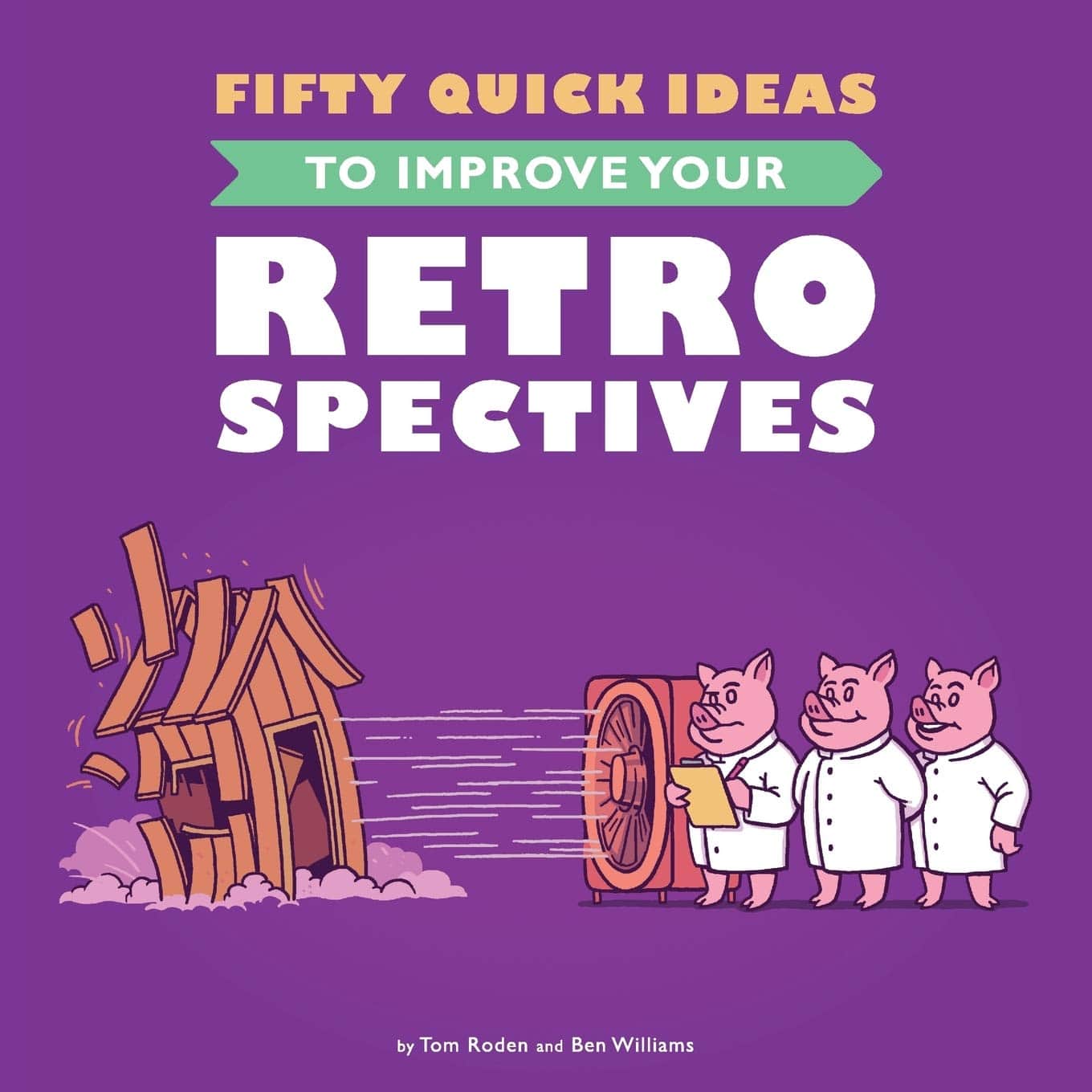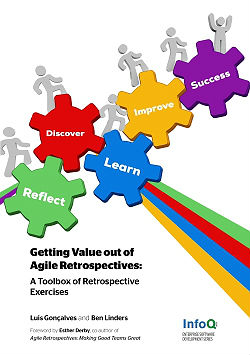Project & Agile Retrospective Books Worth Reading

When it comes to agile working, knowledge is power. The best agile teams are constantly looking to improve, learn from others, and level up their abilities and effectiveness.
Within this, retrospectives are a vital part of the project lifecycle and one of an agile team’s most effective tools for future improvement. Done well, retrospectives lead to success, building on the experiences of every team member and the project as a whole, to improve systems and processes in the future.
But the thing is, there are so many project and agile retrospective books out there — and not all of them are worth reading. Product teams need resources that actually improve their knowledge and understanding… without confusing them or wasting their time. The agile world is full of jargon and complicated vocabulary, and teams need books that cut through the buzzwords and present complex information and guidance in a clear, understandable way.
Luckily, plenty of books do get it right. Written by product development experts and authors with years of experience carrying out successful project and agile retrospectives, these titles provide information that’s genuinely worth reading.
In this blog we will list some of the most helpful project and agile retrospective books around, providing the best resources to help agile teams work harder, better, and smarter.
9 project & agile retrospective books to add to your reading list today
In no particular order, these are our 9 favorite agile retrospective books…
1. Agile Retrospectives: Making Good Teams Great

Authored by two of the software industry’s leading facilitators, Esther Derby and Diana Larsen, Agile Retrospectives shows you how to take advantage of your team’s experience throughout the life of your projects. Years of retrospective know-how has given Derby and Larsen a deep understanding of the tools and recipes needed to solve problems your teams face with technology, methodology, and trickier ‘people’ issues.
This agile retrospective book is designed to train teams in proper agile retrospectives. That is, not just conducting ‘autopsies’ once a project is done, but creating retrospectives that can work continually, fixing problems on an ongoing basis, and implementing solutions during the project rather than just in the future.
While Agile Retrospectives is obviously focused on agile teams, its lessons are applicable for any team looking to improve their working practices, work smarter, and be more successful. The book provides a solid foundation for teams of all shapes and sizes, and helps improve the effectiveness not just of project retrospectives, but of iterations and release as well.
One of the best aspects of Agile Retrospectives is that every chapter comes with a takeaway, providing real-world solutions for teams right from the start. It’s written in plain, easily comprehensible language, with a fun, lighthearted twist.
2. Fun Retrospectives

Fun Retrospectives is designed to make existing retrospectives more effective, by applying a light touch approach and enabling teams to enjoy the process more. Fun Retrospectives provides a catalogue of activities that use fun to bring a group of people together and mold them into a team.
The fundamental concept behind the approach is that a setting that is lighthearted, enjoyable, and relaxed is more likely to produce good and useful outcomes. Teams that have fun together work more effectively together as well, and so fun retrospective activities can provide a greater focus, as well as producing better, more relevant information.
(And we couldn’t agree more, over at EasyRetro.io!)
The book presents a menu of retrospective activities to cover the entire lifecycle, from initial ‘energizers’ and check-in, to future planning and check-out.
The authors, Paulo Caroli and Tainã Caetano Coimbra, have a wealth of practical experience in project teams and software development. Caroli has over twenty years of experience in software development, working in various corporations in India, USA, Latin America, and Europe, while Coimbra is an expert software engineer with ten years of experience as a developer, coach, mentor, and facilitator.
One of the things that stands out about Fun Retrospectives is that alongside the tools, tricks, and tactics for improving your retrospectives, it also provides specific guidance for optimizing retrospectives for remote teams, an increasingly important element of modern working.
3. The Retrospective Handbook: A guide for agile teams

The Retrospective Handbook is a guide designed to fine-tune existing retrospectives and make already successful processes even more effective and efficient. It distills the author’s eight years of experience designing and delivering retrospectives into practical advice that can be implemented by your team immediately.
This is an extremely comprehensive exploration of the best practices for agile retrospectives, going into significant detail and breaking down every aspect to its fundamentals. There’s loads of really simple steps and explanations of procedures, which makes it a particularly good read for teams just getting started, as well as those looking to level up their current retrospectives.
The Retrospective Handbook covers the best methods to prepare for a retrospective, and what materials to use to get the right results. It offers guidance on facilitation, and how to deal with common issues, as well as providing overviews of retrospectives in different contexts. It also comes with a handy checklist to ensure that your retrospectives result in change.
Patrick Kua has trained hundreds of tech leads around the world, and is dedicated to training and upskilling the next generation of leaders and innovators. He worked as Chief Scientist and former CTO for N26, a challenger digital bank, based in Berlin.
4. Project Retrospectives: A Handbook for Team Reviews

Norman Kerth, the author of Project Retrospectives, identifies fear of being held responsible for failure as one of the primary factors in retrospectives not working to the best of their potential.
He accurately points out that retrospectives can be emotionally charged. And if team members don’t feel trusted or respected, they are unlikely to engage fully with the process for fear of recrimination or criticism of their work.
Project Retrospectives is founded on the principle that project and agile retrospectives need to be safe. This agile retrospective book provides guidance on how to make retrospectives more productive and effective, of course, but it goes further, too. It shows retrospective leaders and facilitators how important establishing a solid basis of trust is, and how fear of retribution can hold retrospectives back from achieving their goals.
The most important precept, according to the author, is described as Kerth’s Prime Directive:
“Regardless of what we discover, we must understand and truly believe that everyone did the best job he or she could, given what was known at the time, his or her skills and abilities, the resources available, and the situation at hand”.
This agile retrospective book is available as a PDF and in hard copy, making it easy to share among the whole team. This means that the lessons and techniques can be successful for all team members, not just the facilitator.
5. Improving Agile Retrospectives: Helping Teams Become More Efficient

In Improving Agile Retrospectives, experienced agile trainer and mentor Marc Loeffler uses a mix of advice, battle-tested practices, and innovative processes and ideas to help teams optimize the value and productivity of their retrospectives.
His retrospective book is packed with powerful techniques that can be used in a variety of professional contexts, agile or otherwise. It is designed to drive continuous improvement with everything from team-level ‘lessons-learned’ workshops to organization-wide change.
The author uses his background in training and facilitation to provide detailed, results-driven examples that allow you to identify and solve common problems, as well as adapt the general principles of agile retrospectives to your bespoke business needs. Loeffler is an advocate of breakthrough concepts and innovative blue-sky thinking. And the book is a treasure trove of small ideas that have a huge impact — largely because they are tried, tested, and demonstrate real-world success.
6. Fifty Quick Ideas To Improve Your Retrospectives

Designed to be super-accessible and easy to get into, this retrospective book provides a comprehensive list of tips and hints designed to make retrospectives more productive. Better still, this title caters for facilitators, scrum masters, and teams of all levels of experience and expertise.
If you’re looking for continuous improvement as a team — in software development or product delivery, and at an enterprise level as well — then this is a great start. The ‘Fifty Quick Ideas’ concept makes it a great jumping-off point for teams new to the concept of agile retrospectives, but the ideas shared are sophisticated and innovative enough to be just as useful for agile veterans, too.
It works particularly well as a reference book, that is something to dip in and out of for specific solutions to specific situations. But it’s also a great overall guide to organizing retrospectives and improving general teamwork, whether your teams use agile or not.
7. Getting Value out of Agile Retrospectives - A Toolbox of Retrospective Exercises

This one’s a tight, concise retrospective book, aiming to provide teams with the tools they need to make their current retrospectives more effective — and to help them deliver more value in the future.
It provides a series of exercises for bringing your existing retrospective techniques to life, as well as an overview of the ‘what’ and the ‘why’ of agile retrospectives. It goes into detail about the business value and team benefits of effective retrospectives, and helps you develop and apply new ways of working as an agile organization.
This is an agile retrospective book that really shows its value when used alongside other resources, whether training, webinars, or other retrospective books. It’s a great reference point for planning and delivering retrospectives, expanding the reach and productivity of existing retrospectives, and even general project management and software development issues, too.
8. The Scrumban [R]Evolution: Getting the Most Out of Agile, Scrum, and Lean Kanban
![Book cover: The Scrumban [R]Evolution: Getting the Most Out of Agile, Scrum, and Lean Kanban](/blog/assets/images/books/book-8.jpg)
The Scrumban [R]Evolution is a more focused guidebook, exploring the combination of Scrum and Kanban together; guiding teams to find the best applications for lean/agile principles.
This essential guide to Scrumban shows you how to free up your agile teams to tailor Kanban systems to your specific business issues — and provide solutions to problems that Scrum hasn’t solved.
The unique blend of Kanban as a catalyst on top of Scrum’s foundations, amplifying and expanding on its benefits, is the focus of this definitive textbook. But it has loads to offer facilitators looking for wisdom on retrospectives as well.
9. Retrospectives for Organizational Change: An Agile Approach

In this retrospective book, Jutta Eckstein takes a look at the history of retrospectives, and explores how they can be reimagined and reapplied today. She argues that retrospectives can now be used as a powerful catalyst for wider organizational change — even though they started as a way of gathering team feedback.
To make this argument, Eckstein draws upon use cases of retrospectives for organizational change and goes into detail about their practical applications. This retrospective book is less concerned with making retrospectives more productive or efficient, and more focused on using them as a far more transformative, enterprise-level tool for growth and innovation.
Which title will you try next?
Retrospectives are a huge part of agile project management. These meetings provide vital feedback and learnings that can guide future iterations and projects, as well as helping teams work better together.
The books in this list provide an array of different perspectives on how to get the best out of retrospectives: how to make them work more effectively and how to apply their techniques in different contexts and for alternative ends as well.
While there’s plenty of books on agile and project retrospectives, not every one is created equally. And these are the ones that we think are the most useful — that will have the greatest impact on the way you, your team, and your organization works.
Hungry for more agile retrospective insights? Head over to our blog, where you’ll find everything you need.